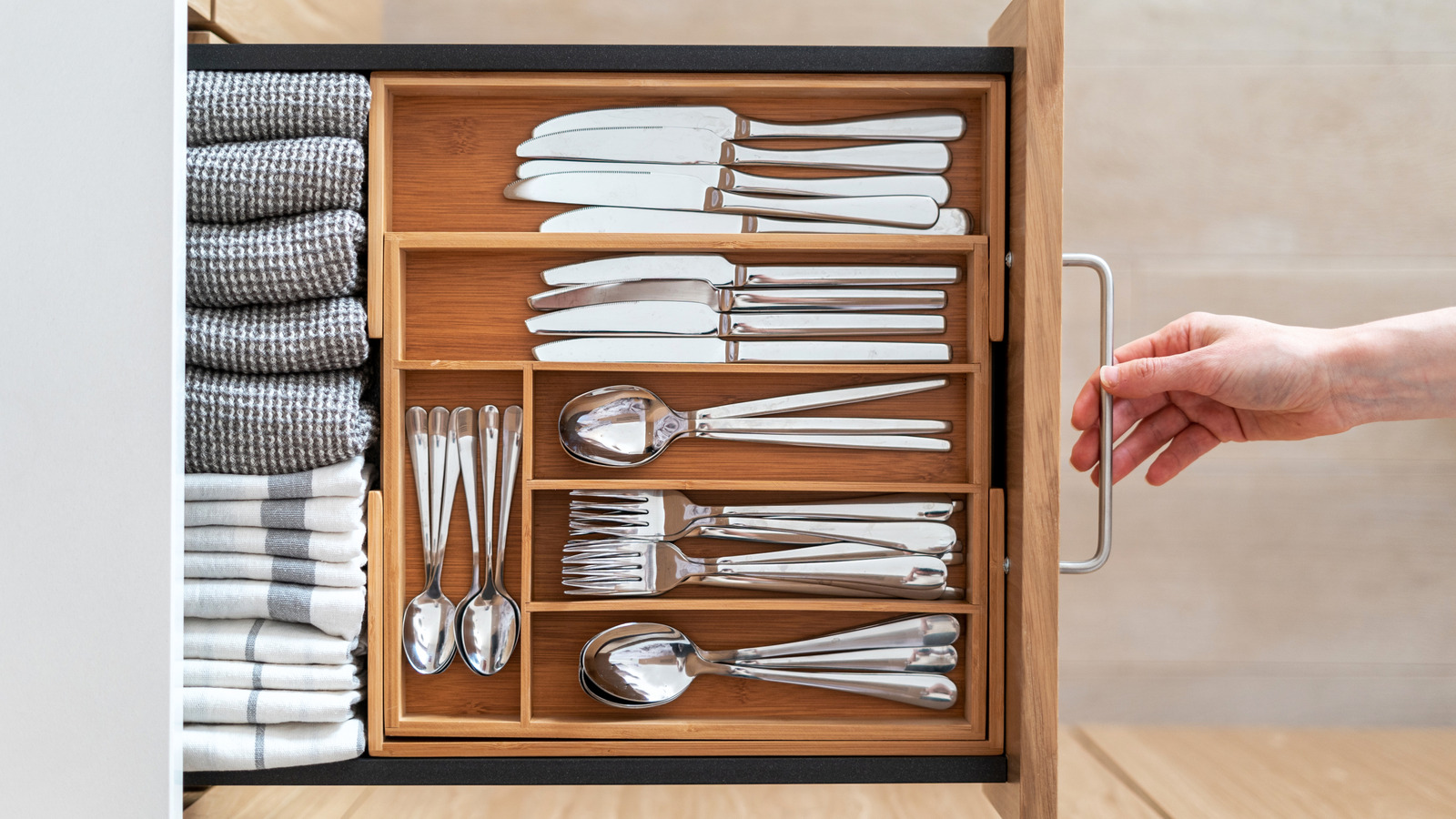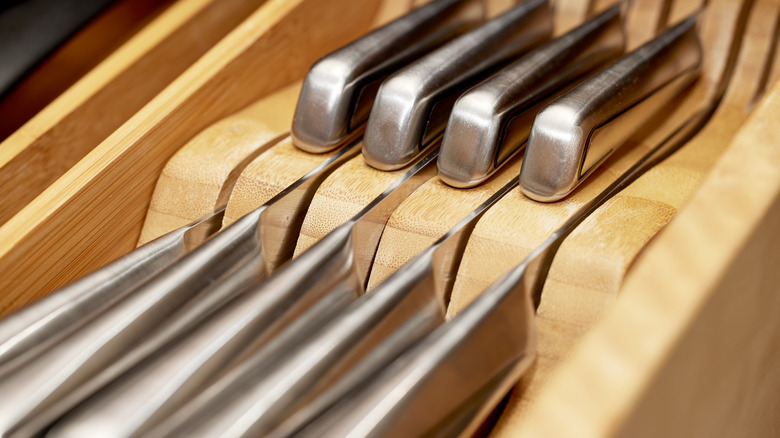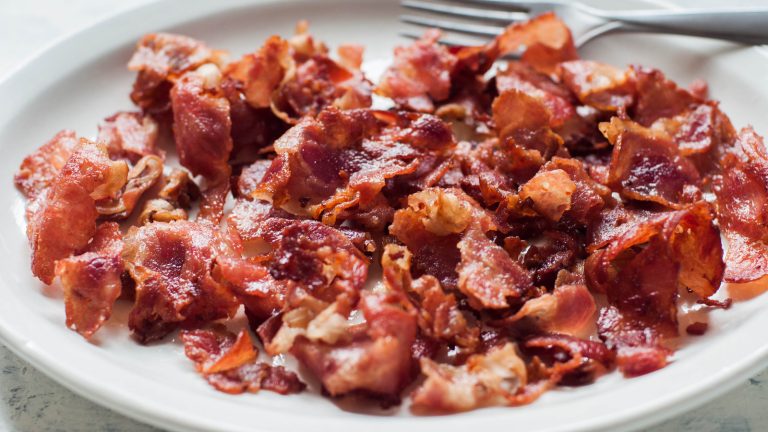We may receive a commission on purchases made from links.
Even if you’re careful placing your sharp knives freely in a drawer, they can shift around during day-to-day use, meaning a sharp blade can be facing right where your fingers will land. The result is a gnarly cut. To avoid slicing yourself, you might consider investing in an in-drawer knife block for the knives you want put away.
Similarly to the countertop knife block, these drawer-specific blocks safely store knives in slots with the blade hidden away to keep your hands safe. Unlike storing your knives freely in a drawer, there’s no possibility of them turning or moving around. Also like the countertop version, they come in different materials. Wooden blocks, such as Wüsthof’s 7-Slot Wooden Knife Block, usually last many years due to their sturdy, solid construction. Plastic in-drawer knife blocks, like the OXO Good Grips Kitchen Drawer Compact Knife Organizer, are another possibility. These knife blocks can be an excellent choice if you’re looking for a more budget-friendly option, though they may not last as long as their wooden counterparts. Plus, if your drawer is small, knife blocks often come in various sizes, so you can choose an appropriately sized version.
In-drawer knife blocks have an edge over countertop knife blocks in several ways. An in-drawer knife block means you won’t have to take up precious counter space with the countertop version, making this the perfect knife storage device for a smaller kitchen. In addition, your knives also won’t be in constant full view like they would with a countertop knife block or even a wall-mounted magnetic strip, which is great if you prefer your knives to be hidden for aesthetic or safety purposes. Once you’ve found your perfect in-drawer knife storage solution, all you have to do is care for it to fully reap the benefits.
How to care for your in-drawer knife block
While in-drawer knife blocks are a pretty simple storage solution for your blades, like any kitchen tool, you have to understand how to clean and care for them correctly to get the most use out of them. It’s also important to take notes from professional chefs to maintain your knives if using a knife block. First, if using a knife block, make sure your knives are completely dry and clean before putting them in their designated slots. Otherwise, with their depth and narrow width, the slots in a knife block can become the perfect place for bacteria growth, playing host to microbes such as mold, yeast, or Salmonella that have stuck to the knife. Also, you should clean your kitchen knife block regularly to further mitigate these issues. Turn it over to let debris fall out and then, if working with a plastic unit, run it through the dishwasher or soak it in hot, soapy water. For a wooden block, use something like a pipe cleaner dipped in a cleaning fluid to swab the slots.
Also, knives placed in these blocks, whether in-drawer or on the counter, can potentially become duller after long-term use because of the blade being consistently rubbed against the wood. This can happen especially if they don’t quite fit in the slots. However, purchasing the right size in-drawer knife block for your blades and placing them carefully will preserve them for years to come — not to mention keep your fingers safe from cuts.






